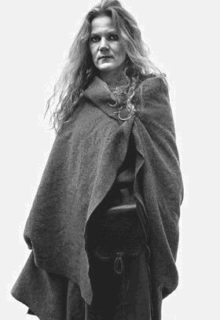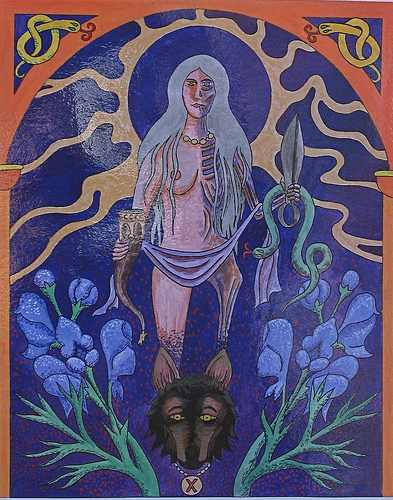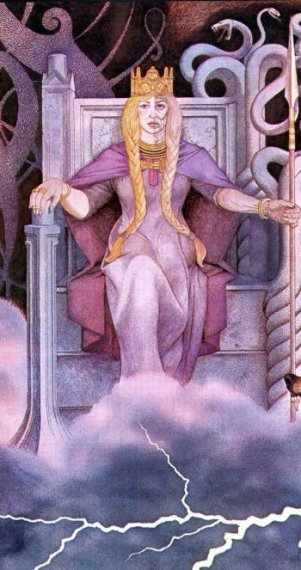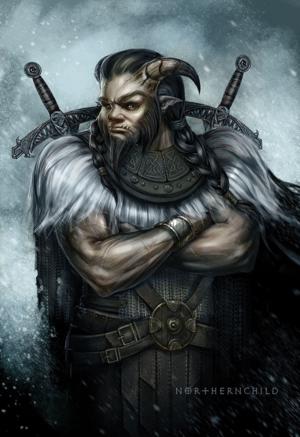Norse and Viking Festivals
The Anglo-Saxon and Norse Goddess of the Underworld is honored annually on the Day of Hel (July 10th) with prayers, the lighting of black candles, and offerings of rose petals.
About Hel:
Also known as Hella, Hela, this deity is simultaneously half-dead and half-alive. Half of her body (cut vertically) is that of a fair, beautiful woman; the other half is necrotized flesh. She is half living woman, half corpse.
Once upon a time, being sent to Hel may have been inevitable, but it wasn’t perceived as punishment: Hel, daughter of Angerboda and Loki, rules the Norse realm of the dead. She is the keeper of the souls of the departed. Those who die at sea or in battle have other destinations; everyone else goes to Hel, who welcomes them into her home, Helhaim, regardless of whether they were good, bad, sinful, or saintly while alive.
Here’s a ritual for Hela’s Day:
- Colors: Black and White
- Elements: Earth and Air
- Altar: Upon black cloth to the right place four black candles, a skull, bones, a pot of earth, a pile of withered leaves, and a gravestone. Upon white cloth to the left place four white candles, incense, an ivory chalice of mead, a crystal sphere, and a bunch of dried roses. Veil the windows.
- Offerings: Blood. Pain. Difficulty. Toil. An arduous task that will take all you have to give, and will benefit the generations yet to come.
- Daily Meal: Meat stew and bread.
Invocation to Hela
Hail to Hel
Queen of Helheim
Wisest of Wights
Keeper of Secrets
Keeper of the hopes for tomorrow
Guardian of Souls
Implacable one of the frozen realm
Half the face of beauty
Half the face of Death.
You who feed the dead
At your meager table
Where everyone gets their fair share,
You who care not
About wealth or status,
About fame or fortune,
Who cares for the peasant
Equally with the ruler,
Teach us that Death is the great leveller
And that we need have no pride
When we reach your halls.
Lady who takes away
Yet holds always promise,
Teach us to praise loss and death
And the passing of all things,
For from this flux
We know your blessings flow.
(Blow out the candles, bow to the altar, and pour out the libation of mead. The roses should be placed outside to rot in the garden.)
Found in: Pagan Book of Hours
 July 9th is the Day of Unn the Wise person. Also known as Aud the Deep-Minded, Unn was a great matriarch who established dynasties in the islands Orcadas, Feroe and Iceland.
July 9th is the Day of Unn the Wise person. Also known as Aud the Deep-Minded, Unn was a great matriarch who established dynasties in the islands Orcadas, Feroe and Iceland.
Example to follow:
Make our own families grow strong, maintain the memory and traditions of our alive ancestors. Remember the great women of your own clan on this Day of Remembrance for Unn the Deep Minded.
About Unn:
Unn was a powerful figure from the Laxdaela Saga who emigrated to Scotland to avoid the hostility of King Harald Finehair. She was the second daughter of Ketill Flatnose, a Norwegian hersir, and Yngvid Ketilsdóttir, daughter of Ketill Wether, a hersir from Ringarike. Unn married Olaf the White (Oleif), son of King Ingjald, who had named himself King of Dublin after going on voyages to Britain and then conquering the shire of Dublin. They had a son named Thorstein the Red
She established dynasties in the Orkney and Faroe Islands by carefully marrying off her grand daughters. Unn then set off for Iceland.
On her ship were twenty men, all of whom were free, but she was still the leader of them, proving that she was respected, but also that she was strong-willed enough to command a ship alone without the help of a man. In addition to the crew, there many other men on her ship, prisoners from Viking raids near and around Britain. They all came from good families, and were called bondsmen. Unn gave these men their freedom once they were in Iceland, making them freed-men, a class between slave and free, where they were not owned, but did not have all the rights of a free man. She also gave them all a great deal of land to farm on and make a living.
As a settler in Iceland she continued to exhibit all those traits which were her hallmark-strong will, a determination to control, dignity, and a noble character. In the last days of her life, she established a mighty line choosing one of her grandsons as her heir. She died during his wedding celebration, presumably accomplishing her goals and working out her destiny in this life. She received a typical Nordic ship burial, surrounded by her treasure and her reputation for great deeds.
Note:
In some pagan calendars this is shown of “Day of Un the Wise Person” which is a misprint.
Source: Asatru.org
June 14 is sacred to the Viking god Vidar. He is one of the sons of Odin and destined to survive Ragnarok and rule over the earth afterwards. He is the personification of the vital energy of nature which returns greening the land even after major disasters.
He is the patron of leather workers. According to Viking tradition, leather workers would put aside all of their off-cuts. These scraps of leather would be buried as offerings to Vidar, and to remove bad luck and evil vibes from the giver.
Vidar gathers these leather scraps to make his enormous, tough leather boot, and at the end of time he will stop Ragnarok when he kills the Fenris wolf by booting it in the mouth.
Later, Christianity changed Vidar to St. Vitus.
Source: Raven Corbis






